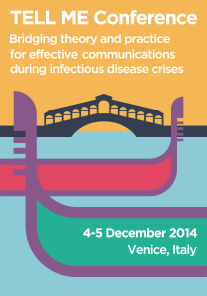Risk Communication
Risk communication is an interactive process of exchange of information and opinion on risk among risk assessors, risk managers, and other interested parties. It is most effective when integrated with risk analysis and risk management and requires the involvement of stakeholders. Problems for risk communicators involve how to reach the intended audience, to make the risk comprehensible and relatable to other risks, how to pay appropriate respect to the audience's values related to the risk, how to predict the audience's response to the communication, etc. A main goal of risk communication is to improve collective and individual decision making.
The U.S. Environmental Protection Agency expressed seven cardinal rules for the practice of risk communication:
- accept and involve the public/other consumers as legitimate partners (e.g. stakeholders);
- plan carefully and evaluate your efforts with a focus on your strengths, weaknesses, opportunities, and threats (SWOT);
- listen to the stakeholders specific concerns;
- be honest, frank, and open;
- coordinate and collaborate with other credible sources;
- meet the needs of the media;
- speak clearly and with compassion.
Risk communication is an interactive process of exchange of information and opinion on risk among risk assessors, risk managers, and other interested parties. It is most effective when integrated with risk analysis and risk management and requires the involvement of stakeholders. Problems for risk communicators involve how to reach the intended audience, to make the risk comprehensible and relatable to other risks, how to pay appropriate respect to the audience's values related to the risk, how to predict the audience's response to the communication, etc. A main goal of risk communication is to improve collective and individual decision making.
The U.S. Environmental Protection Agency expressed seven cardinal rules for the practice of risk communication:
- accept and involve the public/other consumers as legitimate partners (e.g. stakeholders);
- plan carefully and evaluate your efforts with a focus on your strengths, weaknesses, opportunities, and threats (SWOT);
- listen to the stakeholders specific concerns;
- be honest, frank, and open;
- coordinate and collaborate with other credible sources;
- meet the needs of the media;
- speak clearly and with compassion.
Risk communication is an interactive process of exchange of information and opinion on risk among risk assessors, risk managers, and other interested parties. It is most effective when integrated with risk analysis and risk management and requires the involvement of stakeholders. Problems for risk communicators involve how to reach the intended audience, to make the risk comprehensible and relatable to other risks, how to pay appropriate respect to the audience's values related to the risk, how to predict the audience's response to the communication, etc. A main goal of risk communication is to improve collective and individual decision making.
The U.S. Environmental Protection Agency expressed seven cardinal rules for the practice of risk communication:
- accept and involve the public/other consumers as legitimate partners (e.g. stakeholders);
- plan carefully and evaluate your efforts with a focus on your strengths, weaknesses, opportunities, and threats (SWOT);
- listen to the stakeholders specific concerns;
- be honest, frank, and open;
- coordinate and collaborate with other credible sources;
- meet the needs of the media;
- speak clearly and with compassion.


